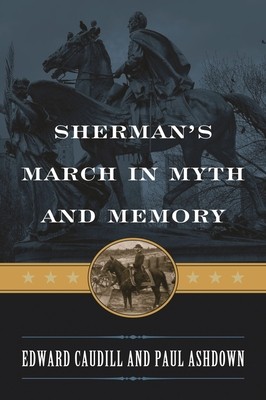
- We will send in 10–14 business days.
- Author: Edward Caudill
- Publisher: Rowman & Littlefield Publishers
- ISBN-10: 0742550281
- ISBN-13: 9780742550285
- Format: 15.9 x 22.9 x 1.5 cm, softcover
- Language: English
- SAVE -10% with code: EXTRA
Reviews
Description
General William Tecumseh Sherman's devastating March to the Sea in 1864 burned a swath through the cities and countryside of Georgia and into the history of the American Civil War. As they moved from Atlanta to Savannah--destroying homes, buildings, and crops; killing livestock; and consuming supplies--Sherman and the Union army ignited not only southern property, but also imaginations, in both the North and the South. By the time of the general's death in 1891, when one said The March, no explanation was required. That remains true today. Legends and myths about Sherman began forming during the March itself, and took more definitive shape in the industrial age in the late-nineteenth century. Sherman's March in Myth and Memory examines the emergence of various myths surrounding one of the most enduring campaigns in the annals of military history. Edward Caudill and Paul Ashdown provide a brief overview of Sherman's life and his March, but their focus is on how these myths came about--such as one description of a 60-mile wide path of destruction--and how legends about Sherman and his campaign have served a variety of interests. Caudill and Ashdown argue that these myths have been employed by groups as disparate as those endorsing the Old South aristocracy and its Lost Cause, and by others who saw the March as evidence of the superiority of industrialism in modern America over a retreating agrarianism. Sherman's March in Myth and Memory looks at the general's treatment in the press, among historians, on stage and screen, and in literature, from the time of the March to the present day. The authors show us the many ways in which Sherman has been portrayed in the media and popular culture, and how his devastating March has been stamped into our collective memory.
EXTRA 10 % discount with code: EXTRA
The promotion ends in 20d.18:03:52
The discount code is valid when purchasing from 10 €. Discounts do not stack.
- Author: Edward Caudill
- Publisher: Rowman & Littlefield Publishers
- ISBN-10: 0742550281
- ISBN-13: 9780742550285
- Format: 15.9 x 22.9 x 1.5 cm, softcover
- Language: English English
General William Tecumseh Sherman's devastating March to the Sea in 1864 burned a swath through the cities and countryside of Georgia and into the history of the American Civil War. As they moved from Atlanta to Savannah--destroying homes, buildings, and crops; killing livestock; and consuming supplies--Sherman and the Union army ignited not only southern property, but also imaginations, in both the North and the South. By the time of the general's death in 1891, when one said The March, no explanation was required. That remains true today. Legends and myths about Sherman began forming during the March itself, and took more definitive shape in the industrial age in the late-nineteenth century. Sherman's March in Myth and Memory examines the emergence of various myths surrounding one of the most enduring campaigns in the annals of military history. Edward Caudill and Paul Ashdown provide a brief overview of Sherman's life and his March, but their focus is on how these myths came about--such as one description of a 60-mile wide path of destruction--and how legends about Sherman and his campaign have served a variety of interests. Caudill and Ashdown argue that these myths have been employed by groups as disparate as those endorsing the Old South aristocracy and its Lost Cause, and by others who saw the March as evidence of the superiority of industrialism in modern America over a retreating agrarianism. Sherman's March in Myth and Memory looks at the general's treatment in the press, among historians, on stage and screen, and in literature, from the time of the March to the present day. The authors show us the many ways in which Sherman has been portrayed in the media and popular culture, and how his devastating March has been stamped into our collective memory.


Reviews